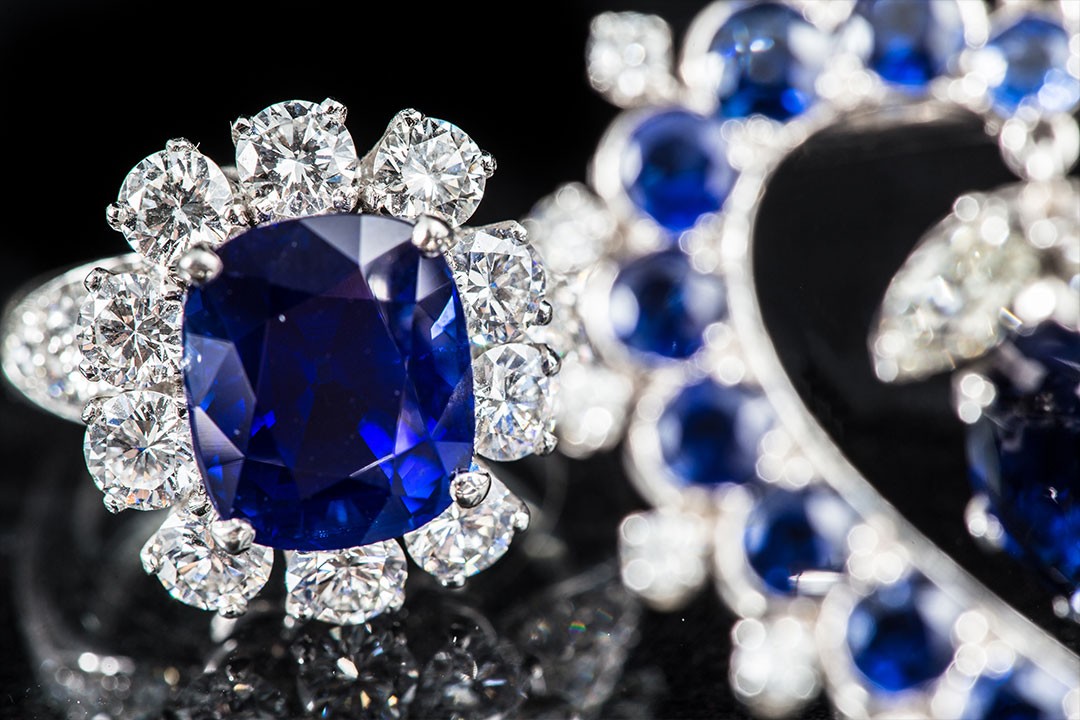When I first started collecting coloured gemstones, I came across an extraordinary book by Richard W. Wise called ‘Secrets of the Gem Trade’. While there were many nuggets of knowledge embedded in the book, there were three, in particular, I continue to employ as my guiding principles. The first, ‘light equals colour’, referring to the variable hues of sunlight and how it impacts coloured gemstones. Mindful of this, I try to view coloured gems between 11.30 am to 2.00 pm when the light is ideally colour balanced.
The second, ‘value beauty, over pedigree’, meaning, before origin, the beauty of the stone will always drive value appreciation. Qualities like hue, tone, saturation, lustre, cut, crystal quality, will remain the fundamental building blocks against which value is assigned and evaluated, with origin only afterwards becoming a factor.
The third principle, ‘while beauty drives demand, it’s the rarity factor that drives the price.’ How does one define rarity? For some, rarity is intrinsically linked to beauty because with each season, finding untreated, beautiful gems of top quality, irrespective of origin is becoming quite the task. For others, rarity is defined by origin, as production from ancient sources is down to a trickle.
While the marketplace is seeing an influx of multi-hued gems, when it comes to long-term value appreciation, none come close to the holy trinity of rubies, emeralds and sapphires. However, even among them, there is one, which holds a unique position, due to its achievement of moving from discovery to world domination in only six short years, the Blue sapphires from Kashmir, India.
First discovered around 1879-1882, due to their remote location, high in the Himalayan mountain range (elevation of approximately 4,500 m.), mining was mainly conducted from July to September, with some years delivering only thirty days of mining. There were two mining sites, the ‘old mine’ with the higher quality sapphires located high on the northeast wall of Kundi valley. The second location was on the valley floor 250 m below the old deposit. Termed the ‘new mine’ it produced mostly milky sapphires with only the skin and tips of crystals being blue. Its truly incredible to comprehend that mining of large, excellent quality sapphires from Kashmir happened from just 1881 to 1887. Since their discovery 138 years ago, their magnificence has captivated the world, and till today, they remain the comparison standard for all other origins.
So, what makes Blue Sapphires from Kashmir so special? Besides the apparent beauty, rarity, history, we need to delve deeper and reflect on our societal structures. Since time immemorial, irrespective of geographical location, society at large has been formed around groups of people, based on their financial, intellectual and artistic abilities. Even in ancient India, the first position in society was awarded to the Brahmins or the learned, followed by the Kshatriyas or the warriors/rulers, then the Vaishyas or the merchants, followed finally by the Shudras or the working class. Fast forward to modern history, and we see the industrial revolution, break-down of colonial shackles, economic development, leading to the democratisation of wealth distribution. The past twenty to thirty years, in particular, have witnessed the emergence of a new segment of wealthy consumers, who in their aspirational search for investment value, an elevated position in society, are graduating from volume to qualitative consumption of luxury goods.
Blue Sapphires from Kashmir, India, represent the pinnacle of acquisition, not only due to their microscopic supply but because of their intrinsic beauty. Further, keeping in mind the first principle of ‘light equals colour’, it’s important to understand, unlike sapphires from other origins, the ones from Kashmir are nocturnal beauties, holding their blue colour despite the setting of the sun.
So, what is the ideal Kashmir blue to acquire? That depends on two factors, the first of heritage tastes, preferring sapphires, which visibly appeared Kashmir, due to their velvety hue, displaying a muted crystal quality, sometimes called ‘cornflower blue’. However, the trend today is favouring Kashmir sapphires with a higher crystal quality, which while not as effervescent as Sri Lankan sapphires or deeper hued like Burmese, still comes close to contemporary deposits vs the archaic choice of aristocrats.
What about sapphires from Madagascar that have recently managed to attain ‘Kashmir’ origin on certificates? Will they impact the appreciation trajectory of Kashmir stones? To answer this, we must remember that similar confusion happened between 1990-92 when certain new, non-basaltic deposits in Madagascar were yielding sapphires that were obtaining ‘Kashmir’ certification. From the perspective of investment, it’s vital to note that temporary misrepresentation of origin, affecting pricing, never has and will never sustain in the long run. Technology and science always manage to catch up and correct the lens.
While absorbing the technical and historical nuances of sapphire evaluation, it’s essential to consider how you feel when you experience the gem. If your personality connects more with a sparkling Sri Lanka sapphire or even a deeper hued Burmese, that’s what you should acquire. However, if your heart desires a sliver of history, from the romantic vales of The Himalayas, representing the perfect combination of rarity, beauty and refinement, the choice can only be a Kashmir Blue.
Reference credit:
Ruby & Sapphire by Richard W. Hughes
Secrets of the gem trade by Richard W.
Wise Conversation with Ronny Totah of Horovitz & Totah, co-founder and exhibitor at GemGenève
By Richa Goyal Sikri





